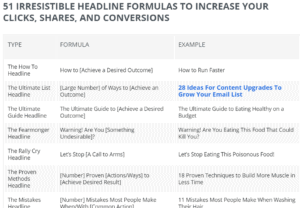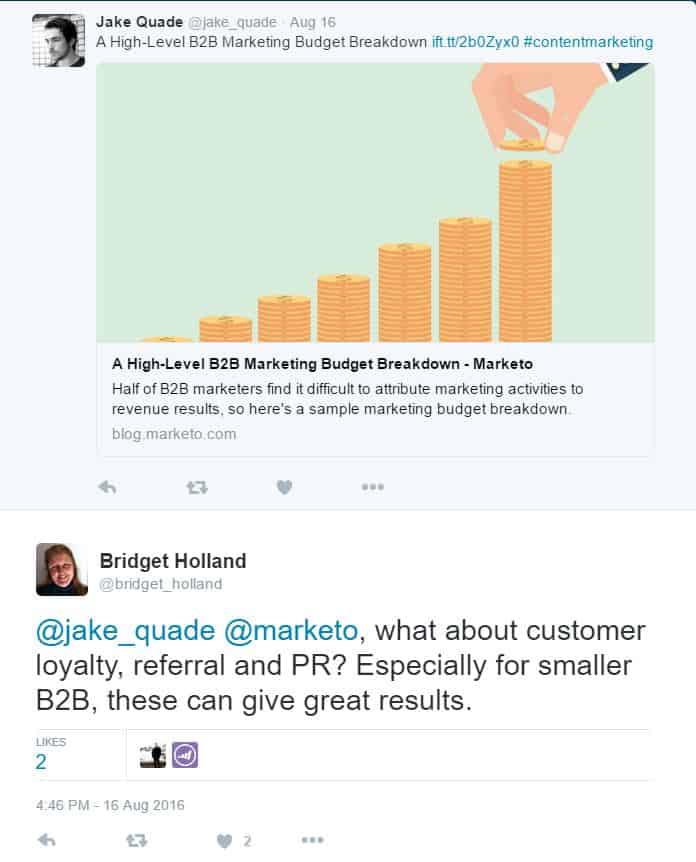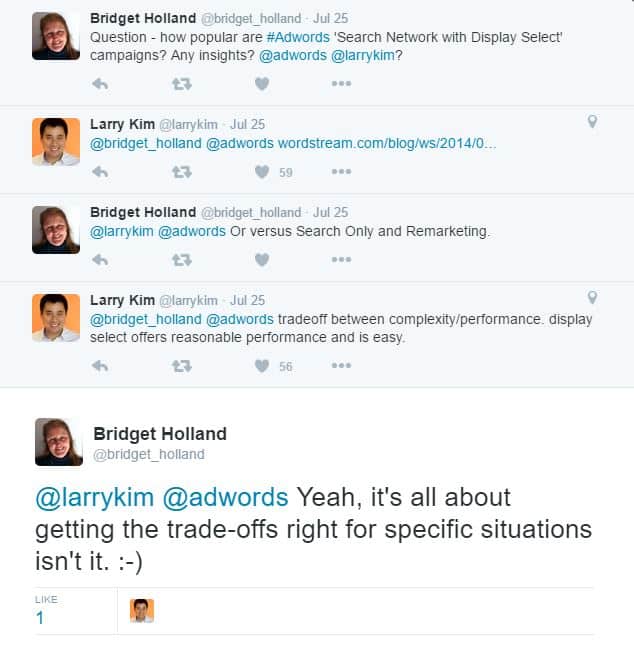Social media is mainstream. Corporates and multinationals have dedicated social media staff – sometimes whole teams. But for small business, the story’s very different. Social media sucks up time you or your team could spend on something else. You’d like a return, but the experts say social media is about engagement, not selling. What can you do?
Start by setting simple, measurable social media goals for your small business. Then plan out the kinds of activity which will help towards those goals. Then schedule the activity.
Drive website traffic, conversions and sales.
This might upset some social media experts, but in my experience, small business owners want a dollar return on their social media investment.
The standard path to achieve this goes something like:
- You put out a social media post.
- It’s interesting, so people click on a link which goes through to your website.
- The content on the website is valuable. It includes a call to action (download e-book for more information, enter our competition, book a spot on the webinar, come to an event) and some of the visitors provide their details. They have converted into leads.
- You and your team follow up and some of those leads convert into customers.
How not to do it
I know one client who had an active Pinterest account. She was pinning several times a week, she had 7 boards and a few hundred followers.
But not a single pin linked back to her site.
How could she ever hope to generate website traffic, let alone enquiries?
On the other hand, we’ve all seen social media profiles which promote their own business and nothing else. It feels like the pushy sales guy at the networking event. No one wants to talk to him. Why would anyone want to follow a social media profile which acts the same way?
How to do it
It’s clear that you need a steady trickle of posts linking back to your website, but you need other posts between them which are not so pushy.
 Ideally, the link posts need to arouse interest or curiosity, so that people want to find out more. That’s what will make them click through. There are plenty of articles online with tried and tested formulas to do this. One of my favourite is this list of headline formulas from Sumome. (Your social media posts are doing the job of a headline – they’re trying to get as many people as possible to read the full article.
Ideally, the link posts need to arouse interest or curiosity, so that people want to find out more. That’s what will make them click through. There are plenty of articles online with tried and tested formulas to do this. One of my favourite is this list of headline formulas from Sumome. (Your social media posts are doing the job of a headline – they’re trying to get as many people as possible to read the full article.
But interesting link posts on social media only get you web traffic. If your social media goal is actual conversions and revenue, you also need
- useful and interesting content on the web page you link to, and
- a clear call to action on the same web page.
Notice this – two thirds of what you need has nothing whatsoever to do with social media! It’s about your website. (If you’re not sure whether your website’s performing, try our DIY website assessment tool, or we can do a full website audit for you.)
So the plan is simple. Get your website content right, then craft a series of posts which promote it. Then post them regularly. But also include a lot of non-salesy, helpful posts. About five times as many as the sales posts!
So what do you put in those non-sales posts? That’s where social media goal number two comes in.
Build your social media following by adding value
Social media is about sharing. So share.
The more good stuff you share, the more people will follow you. And the more people will be exposed to your sales posts. Which gives you more chances for clickthroughs. More chances to convert a lead and acquire a customer.
Your target market don’t care who wrote the original article or post. They just want good stuff. And if you can provide that, they’ll follow you.
How not to do it
Share everything you come across.
Share links without reading the original article.
How to do it
When you share, comment. Commenting is harder work than simply hitting the ‘share’ or ‘retweet’ button, but it’s worth it.
When you simply share, readers assign most of the value to the original producer of the content. When you comment, you become more visible. You’re an active participant, not just a follower and copycat. You earn more value for you.
Now, you may be wondering what comment to make. Here’s some ideas.
- Say what you liked most in the post
- Praise the post but add one thing which was missing.
- Say who you think the post is most relevant for.
- Praise the post and reference another great article on a similar topic. (One of yours?)
- Ask the original poster a question.
- Add a relevant story or suggestion of your own.
And a couple of examples.
As a general rule, don’t criticise harshly. It would be rude face-to-face. It’s rude on social networks too. And it doesn’t get you more followers.
Another hint here – whenever you share, make sure the original content poster knows you’re doing it.
Why? That leads into the final small business goal on social media.
Build your business network
Social media offers excellent opportunities to build networks.
Tweets, business pages on Facebook, posts on LinkedIn – they’re all public, visible to anyone. So you can comment and interact easily, even with the most influential people. It’s not like waiting in a line of 30 people to talk to the keynote speaker at a conference. Or at least not completely. You still have to compete for attention, but you have far more opportunity to do it.
What’s more, social media networks are global, so it’s easy to connect with people in other states or countries. Use this to your advantage – build networks with competitors who aren’t competitors.
For example, if you’re an architect or lawyer servicing the Sydney market, you can co-operate with a similar professional in Melbourne, without fear of competing for clients! You can share expertise, tips, advice, exchange ideas. You can even promote each other – which helps both of you. My first invitation to guest blog came from a conversation on Twitter. A guest blog for a marketing consultant in the US gives me an extra link to my website, which helps me appear higher in Google. It also makes me look more important to potential clients here in Australia.
How to build a network on social media
It’s simple. Start some conversations.
- Share their content – and let them know you’ve shared it. This is a win for everyone. Your followers win because you’ve given them good content. The other person or business wins because their content has been seen by more people. You win because the other person or business now has a warm feeling towards you.
- Ask them questions about their content.
- Provide feedback and insightful comments on their content.
- Have a joke. Act human. Have a mini-conversation.
It takes time, just as it does offline. It’s easier for people to ignore you online, so not all your overtures will turn into conversations. But some will. And with enough interactions, you build a relationship. Which means you’re in a position to help each other out. You might reach out for information. Collaborate on something. Maybe even meet up in real life at a conference or trade show. You don’t know what will happen until you try.
How do you make all this happen without it taking all day?
Firstly, limit the social media networks you go for.
I use Twitter and LinkedIn, but nothing else. This makes it manageable.
If you’re a visual person, or if your service lends itself to visuals (photographer, events manager, architect or builder, furniture restorer, personal trainer), you might want to look at Instagram or Pinterest. But it’s optional. You can share visual content on any network.
Secondly, set some goals for how often you’re going to post.
Set different goals for each type of content. Goals don’t have to be ambitious. They have to be manageable. Consistency is better than bursts and breaks.
For example, for Twitter you might want to aim for:
- 1 sales post a day
- 4-5 value-add posts a day
- 1-3 ‘conversations’ a week
Thirdly, schedule your time on social media effectively.
Conversational interactions tend to be real-time, or near real-time. Even when they aren’t, you can’t plan them in advance. You need to respond to the other person, and you don’t know what they’re going to say.
Everything else can be scheduled in advance. Use a scheduling tool. (I use Buffer. Edgar also comes highly recommended, but has a higher price point and takes longer to set up. There’s a great comparison of the two here. And if the comparison’s too long and complicated, you should start with Buffer.)
Set up a week’s worth of posts in one go. Either do this every week, or keep topping up your schedule in snatches of down-time. On the train, when you’re waiting for an appointment or so on.
Another advantage of scheduling lots of posts at once is that it helps you keep an eye on the proportion of sales posts to general value-add posts.
To manage your conversational interactions, schedule 5-10 minutes a day to log on to your social media networks ‘live’. Follow up on any incoming interactions. (Don’t forget to thank new followers on Twitter. If they’re a good fit for your goals, try to say something nice and specific about them so they see you’ve looked at their profile. Strike while the iron is hot and make a good impression!) If there’s no incoming interactions, reach out to a few people. If you do this every day, or even every other day, you should generate some conversations every week.
Once you’ve interacted with a few people of companies, you may want to work on building relationships with them specifically. Track their profiles and see what you can comment on.
How long does this type of social media action plan take? Maybe 1 hour of scheduling, once a week. And 10 minutes a day ‘live’ – although it’s possible you’ll get sucked in! But you should be able to manage it in a couple of hours per week.
If you haven’t tried social media before – or if you’ve tried and had no success, why not give this action plan a go?
Also, if you like this article, please do me a favour and click on the button to share it on whatever social media networks you’re using!







